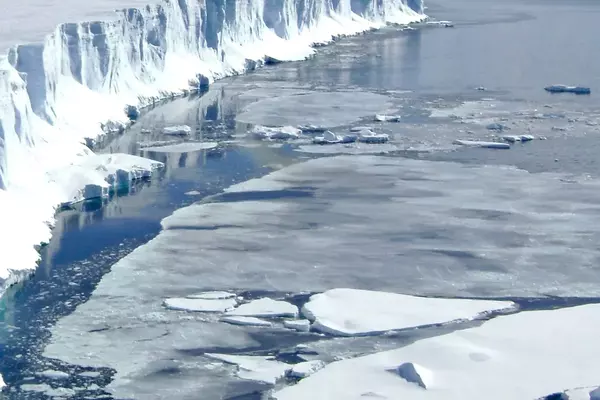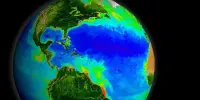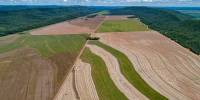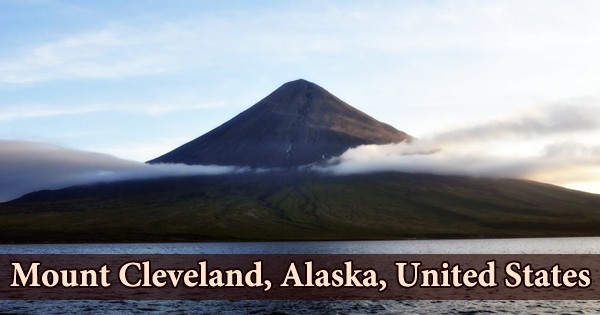Antarctica provides the setting for the world’s largest waterfall. The action takes place beneath the ocean’s surface. Trillions of tons of cold, thick, oxygen-rich water cascade from the continental shelf and plunge to vast depths here. This Antarctic “bottom water” then flows north in deep ocean currents, thousands of kilometers away, before slowly ascending.
In this way, Antarctica drives the “overturning circulation,” a global network of ocean currents that redistributes heat, carbon, and nutrients throughout the world. The overturning is critical to maintaining the Earth’s climate stability. It is also the primary means by which oxygen reaches the deep ocean.
However, there are indications that this circulation is sluggish, and it is beginning decades earlier than expected. The connection between the Antarctic coasts and the deep ocean could be broken by this delay, which would have significant effects on the planet’s temperature, sea level, and marine life.
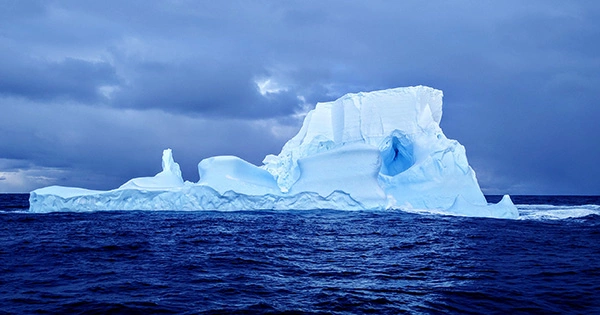
Our latest study, which was just published in the journal Nature Climate Change, examines why and how the deep ocean surrounding Antarctica has altered over the past three decades by using actual observations. According to our findings, the overturning circulation has slowed by almost a third (30%), and the oxygen content of the deep ocean is dropping. Even earlier than expected by climate models, this is taking place.
We discovered that melting Antarctic ice is interfering with the creation of Antarctic bottom water. The meltwater makes the surface waters of Antarctica cleaner, less thick, and so less likely to sink. This puts a stop to the overturning circulation.
The supply of oxygen to the deep ocean decreases when the flow of bottom water slows. The diminishing oxygen-rich bottom water layer is then replaced by warmer, lower-oxygen waters, further lowering oxygen levels.
Ocean species, both large and little, respond to even minor variations in oxygen levels. Deep-sea species have evolved to low oxygen levels but must still breathe. When they run out of oxygen, they may seek refuge in other areas or change their behavior. According to models, we are locked in to a shrinkage of the “viable” habitat available to these animals, with a 25% drop projected.
The slowing of the overturning may also exacerbate global warming. Carbon dioxide and heat are carried to the deep ocean by the overturning circulation, where they are stored and hidden from the atmosphere. As ocean storage capacity declines, more carbon dioxide and heat are released into the atmosphere. This feedback hastens global warming.
Reduced amounts of Antarctic bottom water reaching the ocean floor raise sea levels because the warmer water that replaces it occupies more space (thermal expansion).
Signs of a worrying change: Making observations of bottom water is difficult. The Southern Ocean is remote and home to the world’s fiercest winds and largest waves. During the winter, when bottom water forms, access is additionally restricted by sea ice.
As a result, observations of the deep Southern Ocean are limited. Nonetheless, repeated full-depth measurements made from ship excursions have revealed insights into the deep ocean changes. The bottom layer of water is becoming warmer, denser, and thinner.
The Antarctic ice sheet is receding, according to satellite data. Meltwater is diminishing the salinity (and density) of coastal waters, according to ocean measurements conducted downstream of rapid melt zones.
These indicators suggest a concerning shift, but no direct observations of the deep overturning circulation have been made.
